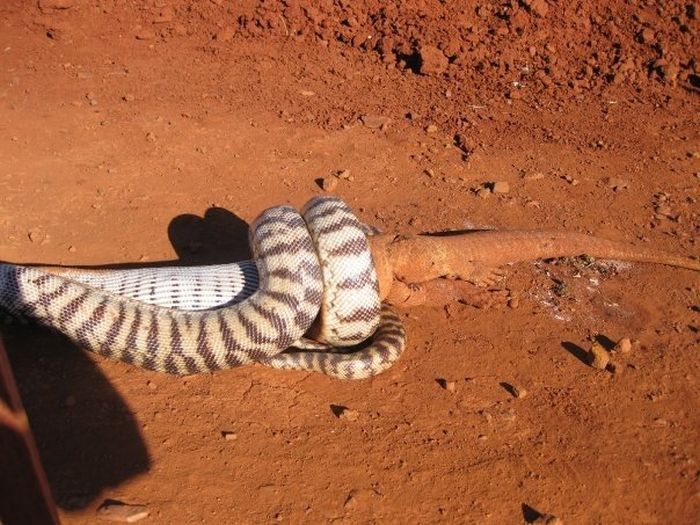|
|
Snake Eats A Lizard
|
• An alternative hypothesis, based on morphology, suggests the ancestors of snakes were related to mosasaurs — extinct aquatic reptiles from the Cretaceous—which in turn are thought to have derived from varanid lizards. Under this hypothesis, the fused, transparent eyelids of snakes are thought to have evolved to combat marine conditions (corneal water-loss through osmosis), while the external ears were lost through disuse in an aquatic environment, ultimately leading to an animal similar in appearance to sea snakes of today. In the Late Cretaceous, snakes recolonized land to appear as they are today. Fossil snake remains are known from early Late Cretaceous marine sediments, which is consistent with this hypothesis, particularly as they are older than the terrestrial Najash rionegrina. Similar skull structure, reduced/absent limbs, and other anatomical features found in both mosasaurs and snakes lead to a positive cladistical correlation, although some of these features are shared with varanids. In recent years, genetic studies have indicated snakes are not as closely related to monitor lizards as it was once believed, and therefore not to mosasaurs, the proposed ancestor in the aquatic scenario of their evolution. However, there is more evidence linking mosasaurs to snakes than to varanids. Fragmentary remains that have been found from the Jurassic and Early Cretaceous indicate deeper fossil records for these groups, which may eventually refute either hypothesis.
Taxonomy
All modern snakes are grouped within the suborder Serpentes in Linnean taxonomy, part of the order Squamata, though their precise placement within squamates is controversial.
|
|









